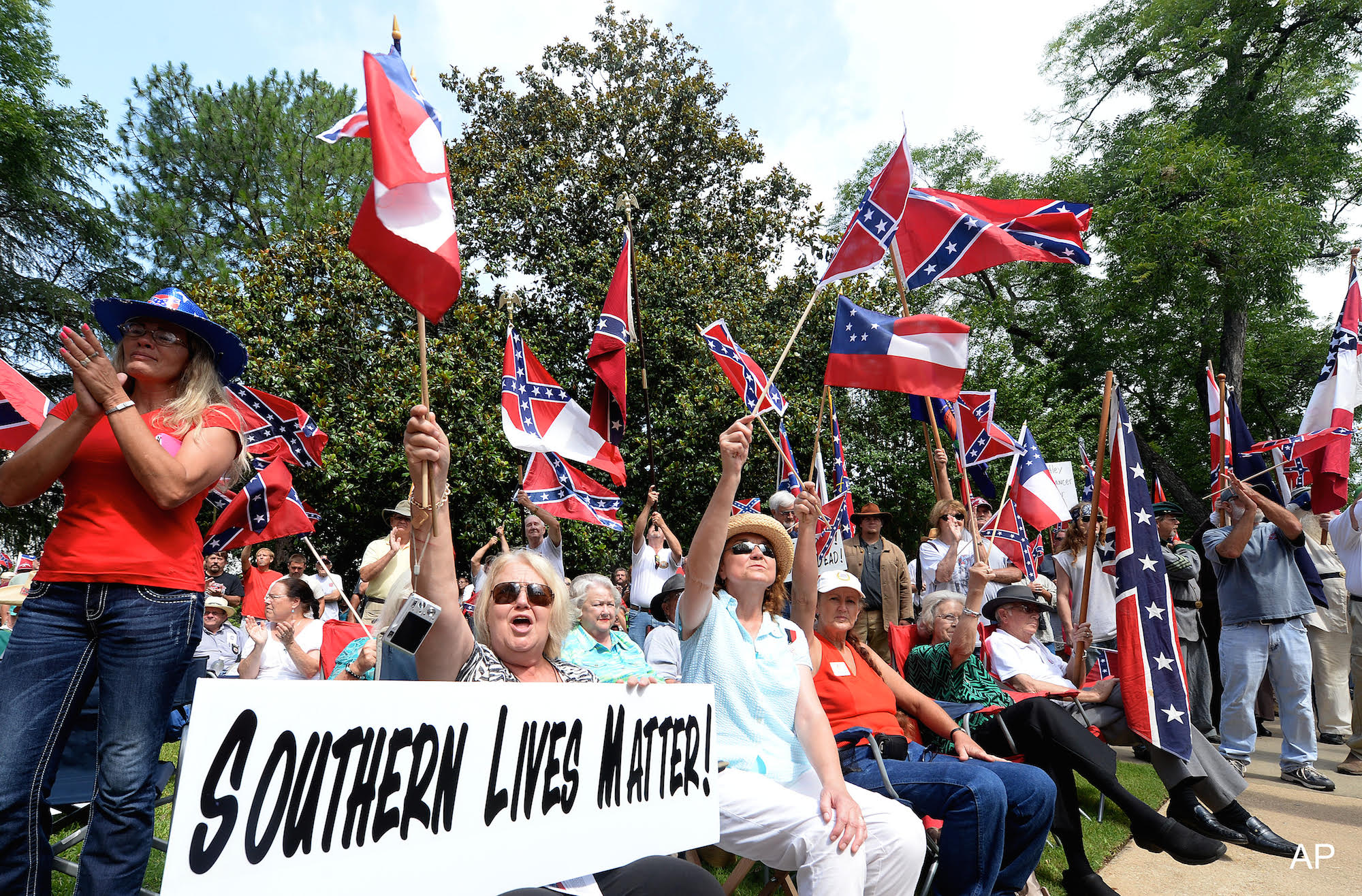
Public buildings remove Confederate symbols
Some public institutions have taken down the Confederate flag and related statues. The Confederate flag represents a trying time in America’s history and it represents a regional pride in being southern.
South Carolina Governor Nikki Haley recently signed a bill to remove the Confederate battle flag from the state Capitol, the culmination of an ongoing movement that was reignited by the murders of nine members of a historically black church in Charleston. Other institutions have followed including the Jefferson Davis statue that was taken down from the UT-Austin campus Aug. 30.
The Confederate states went through three official flags during the four-year Civil War, but none was the battle flag that’s at the center of the current controversy. The first was the “Stars and Bars,” approved in 1861. The flag had only three stripes, two red, one white. It had seven stars to represent the breakaway states: South Carolina, Mississippi, Florida, Alabama, Georgia, Louisiana and Texas.
Throughout U.S. history, from the Civil War to the Civil Rights movement, the Confederate flag has frequently been associated with ideas of white supremacy, racism and slavery. If the flag were to be removed completely, some people worry that a part of America’s history would be erased.
“While I am not a Civil War historian, I am glad to see the Confederate flag placed in museums rather than outside public buildings,” said Jonathan Zophy, professor of history. “That tragic part of our past experience won’t be erased, but it is good to see it go to a less visible place.”
The controversy surrounding the Confederate flag is not a new issue, but it has recently picked up momentum.
“Race, gender, sexual orientation and age are constant issues of discussion in our great country,” said Everette Penn, department chair of Social and Cultural Sciences and professor of criminology. “Race moves forward as the topic of our time because of history and the strain between minority groups and law enforcement. The stressors make the questions move from dinner conversations to opening stories on national and local news. We all have internal beliefs and biases. With the TAPS Academy we try to reduce the social distance and biases through positive interaction between at-risk youth and law enforcement. The question is: can we identify our biases and turn the negative first reaction into a positive response?”
The Confederate flag represents a history of division in our country. The roots of that division still exist today: race relations.
“Unlike mass hysteria that flares up in the presence of fear and ignorance and anxiety, in this case the context of events brought to the consciousness of the larger public, the mass of citizens, a stark awareness of the fundamental ‘wrongness’ of flying the Confederate flag as cover for racism, a custom that encouraged and condoned violence against specified others,” said Angela Howard, professor of history. “It takes a long time to raise consciousness that requires acknowledgment and abandonment of historic error that allows the continued oppression of those defined as ‘the other,’ an oppression from which the oppressor benefits in so many ways.”
The Virginia Flaggers were organized on Sept. 5, 2011. What began with just a few dedicated Southerners has now grown to include hundreds of people from all over the country who have attended dozens of Confederate Memorial Services throughout the Richmond, Va. area.
“In my humble opinion, the best thing we can do to neutralize those who attack us with no provocation is to stay focused on our cause and continue the good work that has been started,” said Susan Hathaway from the Virginia Flaggers. “With every flag that is raised, returned to its rightful place of honor, or added to the landscape, we win a victory for the Confederate veterans who fought and died under them, and when they are not the focus of our efforts, such efforts truly are in vain.”
Texas Senator Rodney Ellis supports the relocation of the Jefferson Davis statue at the UT- Austin campus, and said addressing this issue is important for Texans of all backgrounds, including the many children who visit the Capitol and are confronted with an inaccurate version of history that exalts the Confederacy.
“This has never been about trying to alter or erase history,” Ellis said in press release. “Instead, it’s about who we choose to honor at our public institutions, and we believe we shouldn’t honor men whose main claim to historical relevance stems from their defense of human slavery.”
INTERACTIVE MAP: Hot spots of the Confederate flag debate
Click on the red map markers to learn more about each location.
[googlemaps https://www.google.com/maps/d/embed?mid=zj6Iaqtxqowc.kc0bp6U7WUTY&w=640&h=480]
Google map created by The Signal reporter Chelsea Colombo.

Can you imagine public buildings in Germany raising the Nazi flag? No, neither can I. This was a disgraceful period of our history, and not one to be honored.